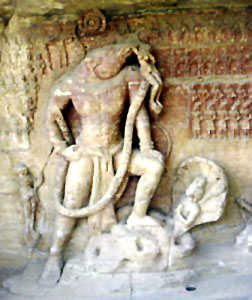 Gupta emperors of India, especially, Samudragupta and Chandragupta II were the greatest kings of Gupta dynasty. Ghatotkocha succeeded Sri Gupta. It was Chandragupta I who is recognised as the consolidator of the Gupta Empire. He extended his territory to Magadha, Prayaga and Saket. The Gupta emperors were renowned for their military dexterity, astuteness, diplomacy and chivalry. They would guard their kingdoms and subjects with astonishing valour.
Gupta emperors of India, especially, Samudragupta and Chandragupta II were the greatest kings of Gupta dynasty. Ghatotkocha succeeded Sri Gupta. It was Chandragupta I who is recognised as the consolidator of the Gupta Empire. He extended his territory to Magadha, Prayaga and Saket. The Gupta emperors were renowned for their military dexterity, astuteness, diplomacy and chivalry. They would guard their kingdoms and subjects with astonishing valour.
The rulers of the Gupta dynasty are Srigupta, Ghatotkacha, Chandragupta I, Samudragupta, Ramagupta, Chandragupta II, Kumaragupta I, Skandagupta, Purugupta, Kumaragupta II, Budhagupta, Narasimhagupta Baladitya, Kumaragupta III, Vishnugupta, Vainyagupta and Bhanugupta. Chandragupta I, Samudragupta, and Chandragupta II, Kumaragupta and Skandagupta were the prominent rulers of the Gupta dynasty. The Gupta emperors were valiant and possessed a cultural bent of mind. This was one of the reasons why several litterateurs received royal patronage. One of the most distinguished rulers of Gupta Empire was Chandragupta II. Whilst he fought with unfathomable courage to extend his empire, he was an ardent admirer of various cultures.
Chandragupta conquered much of Magadha, Prayaga and Saket. Samudragupta succeeded his father in 335 CE, and ruled for about 45 years. He captured the kingdoms of Ahichchhatra and Padmavati and then attacked the Malwas, the Yaudheyas, the Arjunayanas, the Maduras and the Abhiras. Emperor Chandra Gupta II succeeded him and expanded his dominion westwards. He defeated the Saka Western Kshatrapas of Malwa, Gujarat and Saurashtra. He was succeeded by his second son Kumaragupta I. Skandagupta, son and successor of Kumaragupta I, is considered to be the last of the great Gupta rulers. He was followed by weak rulers like Purugupta, Kumaragupta II, Budhagupta, Narasimhagupta, Kumaragupta III, Vishnugupta, Vainyagupta and Bhanugupta.
The rule of the Gupta emperors led to unprecedented achievements in the fields of science, mathematics, art, astronomy, literature, religion and philosophy. While the rulers of the dynasty followed Hinduism, they practiced religious tolerance. Several temples were built by them which are till date remembered for their superb architectures. From Nagara style temples to rock cut caves; a variety of religious monuments were constructed during their rule. The Gupta emperors truly proved themselves to be prolific builders.
Whether it was trade, medicine, astronomy, metaphysics, martial arts or sculpture, the Gupta emperors employed every possible strategy to make their subjects happy and prosperous. This, indeed, resulted in the ushering of the Golden Rule in ancient India.



















